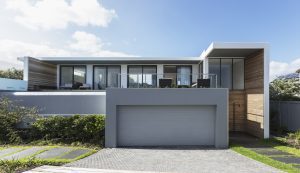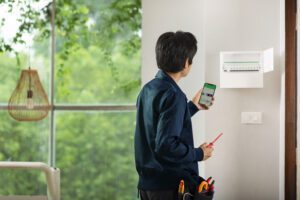This audio was created using Microsoft Azure Speech Services
Sometimes homeowners might think their houses are singing that 60s hit about not being owned. Especially when it comes to saving money and increasing safety.
For the first of those two, consider that homeowners have installed alternative power sources, like solar panels, wind turbines, geothermal, and more. Those systems aren’t cheap. In the United States, where subsidies vary by region, the cost of a solar installation ranges from $10,000 to more than $25,000. Even in Germany, which underwrites solar extensively, the cost of a residential system tops €1000 (1130 US$).
So, naturally, homeowners would like to know if their expensive renewable systems are actually delivering what they’re supposed to.
Beyond that, people would like to get a handle on their electricity and energy costs. Residential electricity often is more expensive than that for commercial or industrial sectors. With prices rising steadily for the foreseeable future, homeowners would like to have ways to monitor and control their energy usage.
As for that second item – safety – people have been conditioned by phones to
- Constant access, and
- Doing things remotely.
So people expect they will be able to monitor their homes at a distance and take corrective action. That’s not an unreasonable desire. Imagine this scenario. You’re on vacation. While you’re on holiday, your refrigerator decides to it too will stop working. Best case is you come home to spoiled food and a mess to clean up. The worst case is a destructive fire.
So there are good reasons why people want more control of their homes, such as saving energy, making sure costly systems are performing, and ensuring that electrical appliances aren’t failing and causing big problems. Both saving energy and increasing safety are important.
Also, most homeowners are already living in their homes. So, it’s not really practical for them to build a brand new home to accomplish all of this. Ideally, there would be a retrofit that could economically monitor all energy usage as well as household appliances and safety-related systems.
While outlining what an ideal solution would look like, there’s another important fact to keep in mind. When it comes to household safety, the danger isn’t entirely within a home. There are also external threats, which is one reason why people have burglar alarms and smoke detectors. So, a solution should work with and enhance these.
A final factor is that people may have home automation systems that can turn lights on or off or carry out other functions. A model solution would take that into account by allowing integration of such systems.
For an example of such a solution, take a look at Wiser Link. The components fit within a residential electrical panel, a point that all electrical appliances tie into. There also is the ability to connect to other energy sources and utilities. What’s more, the system ties into the cloud, enabling the ability to check on everything remotely.
With such capabilities, homeowners can go on vacation without giving up control of their energy monitoring and without potentially compromising residential safety. They’ll also experience greater control and security while they are at home. And with that, they will really have something to sing about.




Conversation
Aysha Abd husseinmawls elhsm
7 years ago
Home sweet home
Jari becker
7 years ago
That’s really great technology is making it very easy to secure our house, i’m very glad to have a advanced technology